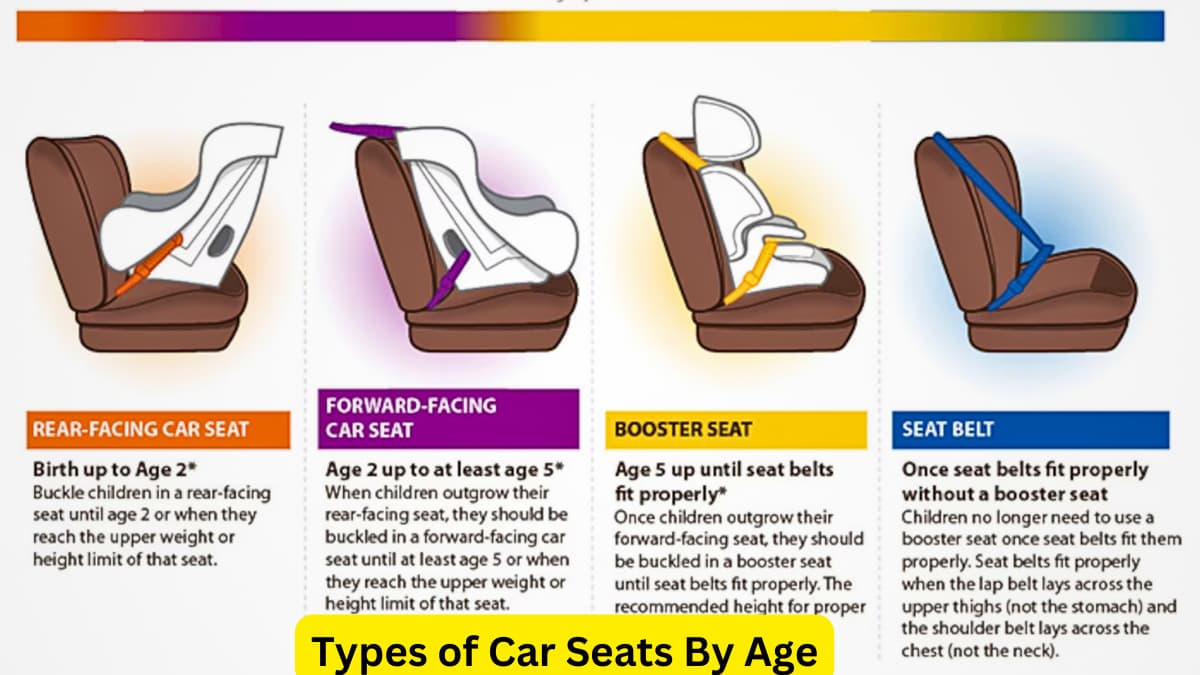Types of Car Seats By Age: Ultimate Guide to Finding the Right Car Seat
Curious about the Types of Car Seats By Age? Let’s find out all the questions all about the Types of Car Seats By Age.
Ensuring the safety of your child while traveling in a vehicle is of utmost importance. Selecting the appropriate car seat according to your child’s age, height, and weight is crucial for their well-being. Different age groups require specific types of car seats to provide the best protection.
Infant Car Seats (From Birth to 2 Years)
Infant car seats are designed for newborns and infants up to about 2 years old. These rear-facing seats provide optimal support for a baby’s delicate head, neck, and spine in the event of a collision. They often come with a detachable carrier, making it easy to move your baby in and out without disturbing their sleep.

Check Our Previous Article:
Toddler Car Seats (From 2 to 4 Years)
Once your child outgrows the infant car seat, it’s time to transition to a toddler car seat. These seats are also rear-facing but are suitable for older and larger children weighing between 20-65 pounds. Toddler car seats offer extended rear-facing capabilities, keeping your child safer for a longer period.
Convertible Car Seats (From Birth to 7+ Years)
Convertible car seats are versatile, as they can be used in both rear-facing and forward-facing positions. They accommodate children from birth up to 7+ years, depending on the weight and height limits specified by the manufacturer. Convertible seats offer extended use, making them a cost-effective option for parents.
Booster Seats (From 4 to 12 Years)
Booster seats are designed for older children who have outgrown their toddler seats. These seats are forward-facing and help position the seatbelt correctly over the child’s chest and hips. Booster seats ensure that the seat belt fits properly, providing additional protection in case of an accident.
Backless Boosters & High-Back Boosters
| Backless Boosters | High-Back Boosters |
| Backless boosters are lightweight and easy to move between vehicles. | High-back boosters provide neck and head support for taller children. |
| They are suitable for older children who do not need the extra support. | Recommended for children who still need head and neck protection. |
When Can Children Start Using Seat Belts?
Children can start using a seat belt once they reach a height of 4 feet 9 inches and are between 8-12 years old. Until then, they should use appropriate child safety seats for optimal protection.
Frequently Asked Questions On Types Of Car Seats By Age
What Is The Best Car Seat For Infants?
The best car seat for infants is a rear-facing infant car seat that is designed specifically for newborns and small babies.
When Can A Child Switch To A Forward-facing Car Seat?
A child can switch to a forward-facing car seat when they have outgrown the height or weight limit for their rear-facing seat, usually around the age of 2.
How Long Should A Child Remain In A Booster Seat?
A child should remain in a booster seat until they are big enough to fit properly in a seat belt, typically around 8-12 years old.
What Are The Safety Requirements For Car Seats?
Car seats should meet the safety standards set by the National Highway Traffic Safety Administration (NHTSA) and should be installed and used according to the manufacturer’s guidelines.
Conclusion
Choosing the right car seat for your child based on their age is crucial for their safety. Always follow the manufacturer’s guidelines regarding weight and height limits for each type of car seat. Keep your child in a rear-facing seat for as long as possible and transition to a booster seat when they outgrow their forward-facing seat. Prioritize safety to ensure a secure and comfortable ride for your little one.
Last Updated on April 21, 2024 by Brian Beasley

